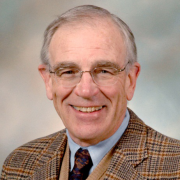Growing up in Chicago , I observed that neighborhoods, schools, and even churches harbored diverse immigrant groups – among them my mother’s parents who had emigrated from Ireland . Despite this variety, my own experience hued narrowly to the few groups in which I held membership. At age seventeen four of us classmates undertook an odyssey unusual for the 1950s, traveling from Minnesota (to which my family had relocated) through several states of the west and south, reaching as far as Texas . Filled with youthful egalitarianism, we were first shocked, then angered and saddened by the segregation and inequities in our country. Summer work on construction crews brought me to close quarters with “displaced persons” from World War II and with emigrants from rural areas of our own country. Early on, the capacity of group affiliation to protect and succor on one hand, while excluding or restricting on the other hand, became one of life’s great mysteries.
Entry into the University of Minnesota Medical School precipitated a break from my own ethnic origins. First faculty and students, then patients and their families served as entrees to other ethnicities. These contacts were not evanescent: they involved long periods spent in mutual study, work, play, and pursuit of understanding. In our early course on physical diagnosis my first patient was a Chippewa man, a teacher and decorated veteran, who lay dying in his prime. This chapter in my life, begun in an effort to acquire skill and knowledge, deepened both my confusion and my curiosity regarding cultural similarities and differences.
Several years later, while practicing general medicine in the midst of several ethnic neighborhoods in St. Paul , I matriculated as a student, and then a graduate student in anthropology. Initially a diversion for my afternoon off duty, it soon became a passion. My teachers and mentors had each left their ethnic-group-of-origin at some point to live among a people entirely different from their own, often in a strange land, requiring that they learn a new language. Although this group of sojourners had few answers to the mysteries that drew me, they were familiar with the terrain. They had words to describe the phenomena of ethnicity that rang true. Although their models sometimes defaced the reality that I was trying to discern, they were engaged in the pursuit. Over the ensuing decade I took their courses, sought their guidance, and (insofar as time permitted) learned their craft.
In the midst of this stage, the desire to leave my own culture for a time and live in another become increasingly urgent. After considering a score of options over a year, I ultimately joined the Public Health Division of the U.S. Agency for International Development. My assignment to a rural health program for internal refugees in Laos ideally suited my purposes – and more. That two-year experience, halfway around the globe from my home, introduced me to two puzzles that have engaged me since that time. One of these mysteries was addiction and the other was the individual response to mass disaster and violence.
Returning to the United States , my next enterprise involved three years of psychiatry residency, with another year of statistics, epidemiology, and advanced course work in anthropology and sociology. This return to the academic setting, after medical training, medical practice, and field experience, provided a unique opportunity to integrate these experiences, while simultaneously acquiring psychiatric skills and knowledge. Tutelage from academic psychiatrists, social scientists, and epidemiologists – each of whom knew little about the other – required that I seek or invent bridges to span the gaps in their perspectives and understandings.
Upon my completion of formal training, the faculty in psychiatry at the University of Minnesota invited me to join them. That department and institution have greatly supported and facilitated my work in addictions psychiatry and in the psychiatric sequelae associated with violence and social tumult. As professor of psychiatry and adjunct professor of anthropology, I have been able to consult with the U.S. Agency for International Development, the World Health Organization, and various public health ministries and medical centers. Grants from the National Institute of Drug Abuse, National Institute of Mental Health, National Institute of Alcohol Abuse and Alcoholism, Veterans Administration Health Services Research, State of Minnesota , Minnesota Medical Foundation, and several other foundations have supported these efforts. Colleagues, students, research coordinators and assistants have joined in endeavors that would have been impossible if attempted alone.
Although my two major areas of interest (addiction and victimization) appear unrelated, in fact they possess many similarities. I have been Machiavellian in selecting methods of study. These have ranged from single case reports to epidemiological studies involving over a thousand people, from use of psychological tests and psychiatric scales to ethnographic observations, from cross-sectional studies to decade-long diachronic studies, from simple observations to treatment-outcome.
Discovering and affiliating with clinicians and other investigators in cultural psychiatry has brought exceptional rewards, while also affording challenges to favored-but-unfounded beliefs. These contacts began at a symposium of the American Psychiatric Association, where I had the privilege of presenting a paper in the company of Ron Wintrob and several other cultural psychiatrists. It continued at the annual meetings of the Society for the Study of Psychiatry and Culture. Projects with the World Health Organization (sponsored by Drs. Norman Sartorius and Awni Arif) over two decades led to affiliations and studies that could only occur under international aegis. Regardless of study or setting, these colleagues strove to understand, to serve, and to bridge differences through our shared humanity.
The common features that weld us, as colleagues, are not easily discerned. We come from many ethnic, linguistic, religious and other backgrounds. Our medical training and experiences might have bound us to an extent, although many colleagues have been clinicians from other backgrounds as well as social and behavioral scientists. Common features included having adjusted to life in another culture, having worked clinically serving people from that culture, often having learned the language and shared the life way of that people. Many of us have undertaken studies of psychiatric disorder away from clinical settings – another unique and demanding experience, given the obstacles facing an outsider seeking to study stigmatized conditions.
On a personal level, I am fortunate that Rachel Moga Westermeyer decided (after some serious negotiations) to accompany me to Laos and on many journeys since. Her warm social relationships have often facilitated my professional (and more formal) relationships. She has been a constructive editor and writing coach. Her experiences and those of our two children in other societies have often corrected my gender- and age-driven myopias. Likewise, the five Hmong children who joined us for several years, following the deaths of their parents and our friends Her Tou and Joua Lo, have taught vicarious lessons on loss and transcendence that unfold day by day.
October 5, 2006

